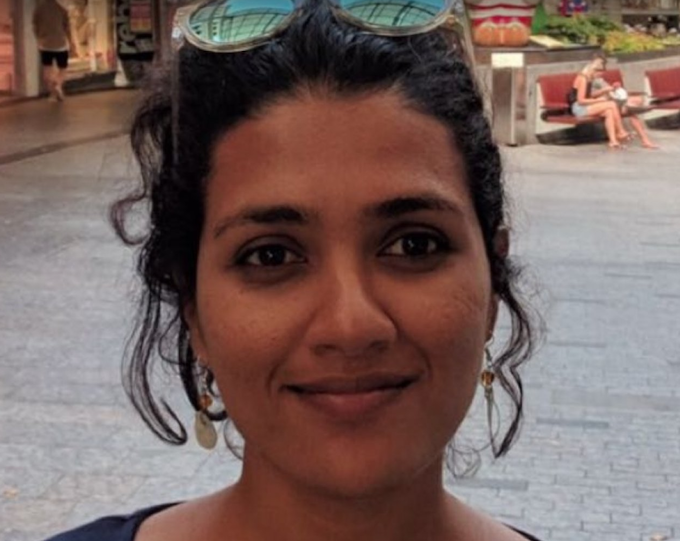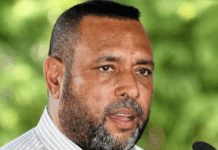
By Jason Brown in Auckland
Worldwide anti-corruption rankings – or first world whitewash?
Long-standing questions about the fairness of corruption ratings and rankings from Transparency International surveys now have answers.
From the Pacific, at least.
For example, why was New Zealand dropped from TI’s Global Corruption Barometer (GCB)?
“I do know about this because we tried to get NZ included,” says Transparency International New Zealand chair Julie Haggie.
“Unfortunately it is a funding issue.”
This lack of funding means supposedly more corrupt “developing” countries are scrutinised more closely than allegedly cleaner “developed” countries, fuelling criticisms of bias against developing and poor countries.
GCB surveys the public
Unlike Transparency International’s much better-known Corruption Perceptions Index, the GCB surveys members of the public about actual experiences of corruption, not just “perceptions” from “experts” and “business leaders”.
So how did the gap between the two surveys come about?
“Funding for the GCB Pacific came out of aid funding from Department of Foreign Affairs and Trade (Australia) and Ministry for Foreign Affairs and Trade (New Zealand) under the Pacific reset and Pacific Stepup programmes,” said Haggie.
“Their funding specifically excludes activities in donor giving countries that are not directed out to the Pacific.”
However, New Zealand did feature – once – in the barometer survey.
That 2013 survey found that 3 percent of those responding reported incidents of bribery – some 30 people directly, or around 80,000 people if taken as a representative sample of the wider New Zealand population.
Those experiences are all but ignored across government websites there, with GCB survey results mentioned only once.
Responses from Berlin
So why was New Zealand dropped from the barometer?
Islands Business sent questions to the press section at the global headquarters of the Berlin-based organisation in early February, but got no reply.
Asked for help with getting a response from Berlin, Haggie replied that:
“As I understand it this was not a TI decision.
“They did have a limited pool of funding which may have determined how many small Pacific nations they could include. Australia was not included in this set as well, I think they were previously included in an Asian GCB which NZ was not included in.”
Haggie is correct – Australia has disappeared from the barometer as well.
In 2017, however, Australia reported a bribery rate of 4 percent, or just short of a million people if those surveyed are representative of the general population.
Lacks funding for survey
At the same time Transparency International claims it lacks funding to survey actual corruption in Australia and New Zealand, both countries are instead funding research that focuses attention on corruption – in the Pacific.
“We are undertaking research this year which will look at the connection between money laundering and corruption across the Pacific,” said Haggie.
While this will no doubt be welcomed by island-based anti-corruption campaigners, criticism of the fairness of Transparency International surveys go well beyond Australia and New Zealand.
Global concerns go back years, focused around developed countries ignoring their own backyard.
Similar concerns were already long standing enough for the inventor of the index to withdraw from future surveys over a decade ago.
“In 1995, I invented the Corruption Perceptions Index,” wrote Passau University professor Graf Lambsdorff in a 2009 email to the TI network, “and have orchestrated it ever since, putting TI on the spotlight of international attention.
“In August 2009, I informed Cobus de Swardt, managing director of TI, that I am no longer available for doing the Corruption Perceptions Index.”
Gaps in the Pacific
Back in 2021, Transparency International’s Pacific regional adviser Miriam Mathew agrees there are gaps.
“When New Zealand was last included in the GCB in 2013, it was undertaken as part of a global rather than a regional report, and TI had access to other sources of funding covering corruption measurement tools globally,” Mathew said.
“If future opportunities arise to survey New Zealand (and Australia) for the GCB, we would be very interested to do so, as of course it does leave gaps in our understanding of people’s lived experience of corruption around the world and in the region.“
Ironically, Transparency International itself has referred to concerns about a whitewash by first world countries in other spheres.
Quoting an Oxfam report in May last year, titled “Blacklist or whitewash?”, TI noted the example of the European Union, which leaves its own countries off lists of tax havens.
Jason Brown is founder of Journalism Agenda 2025 and writes about Pacific and world journalism and ethically globalised Fourth Estate issues. This article was originally published by Islands Business online and is republished with permission.










































